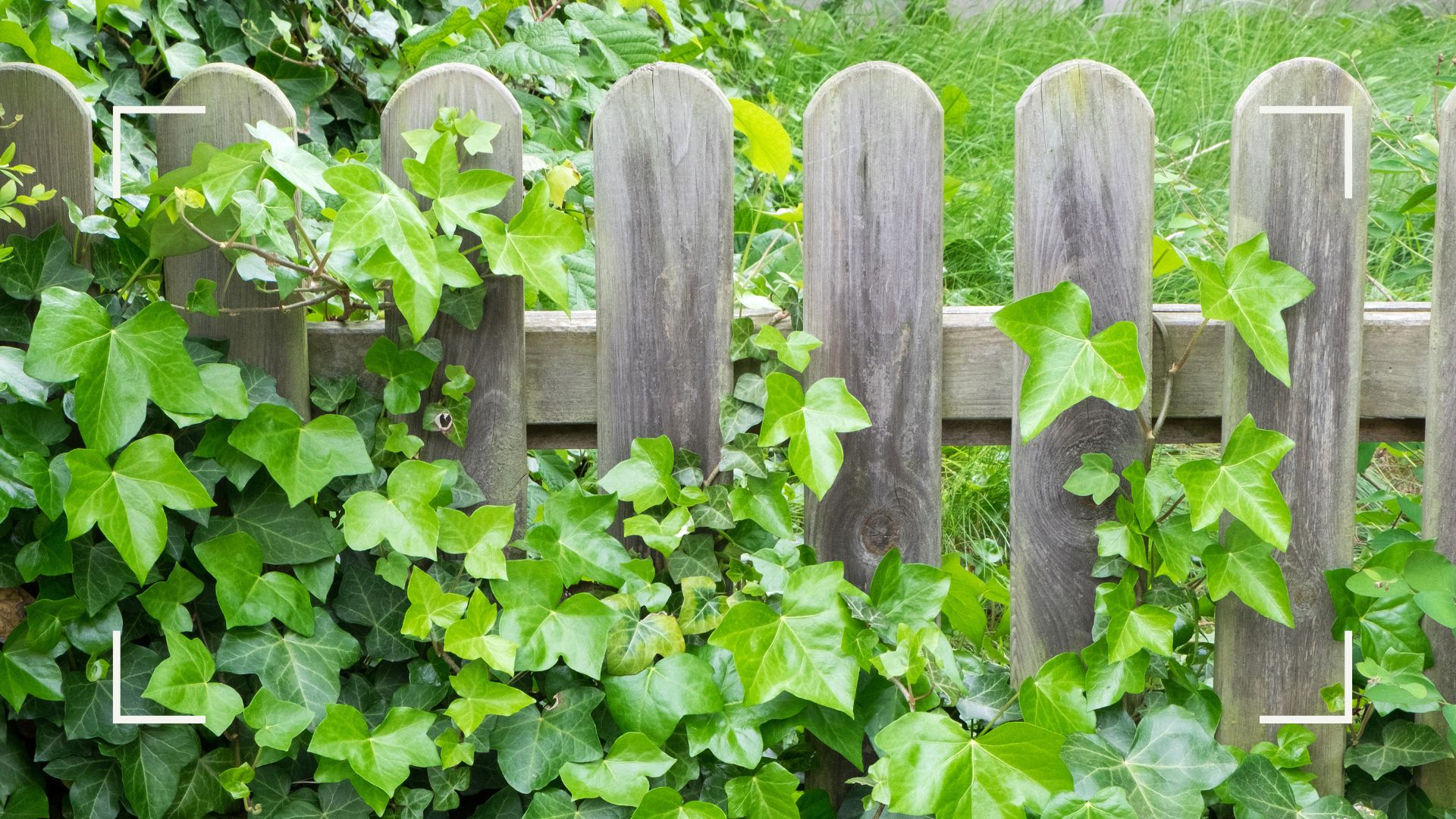
Ensuring you know how to get rid of ivy efficiently is the key to maintaining the health of your fence panels, walls and surrounding plants. Mastering how to remove it naturally is all the better.
Some consider ivy one of the most invasive garden plants because it's a vigorously growing low-maintenance plant that thrives in even the unhealthiest of soils, whether you want it to or not. It attaches itself to surfaces, such as fences and walls, causing damage if left for too long.
"Ivy is not parasitic like mistletoe and, therefore, does not harm most trees that are in good health," explains gardening expert Mark Lane. "It also has much wildlife value. However, there may be times when removal is the only remedy."
"If fences are breaking because of the weight of the ivy or walls have cavities and loose mortar, removal is advised," Mark concludes.
With wildlife and the rewilding garden trend in mind, we ask how do you naturally eliminate ivy to practice a more sustainable garden idea. Here is what horticultural experts recommend...
How to get rid of ivy on a fence or wall: 5 expert tips
It's not just fences that are vulnerable to the stranglehold of climbing ivy, sheds and brick walls are just as likely to become overwhelmed by this aggressive climbing vine.
"The two native ivies found in the UK are Hedera helix (Common Ivy) and H.hibernica (Irish Ivy). The former is the most pernicious," Mark explains. "Removing ivy from trees, fences, and walls should be a considered and thoughtful process." One which doesn't need to involve chemicals, as we find out below.
What you will need
"The removal of ivy naturally from a fence can be challenging, as the vine tends to cling tightly and is quite resilient," says Jane Dobbs, lead gardener at professional gardening services Allan's Gardeners.
"Protect your hands from ivy, insects, and sharp edges with gloves. Wear long sleeves and trousers to protect your skin. For cutting thick vines and stems you will need pruning shears. To detach roots from fences, use a garden knife or trowel."

RRP: £17.49 | Don't be fooled by the pretty print on these gloves, they are tough thanks to their thick material and protective padding. These supportive gloves make light work of pulling out ivy vines.

RRP: £18 | Designed to cut back hedges and even the most established privacy plants, these Spear & Jackson shears are ideal to slice through the thicker stems of ivy roots.
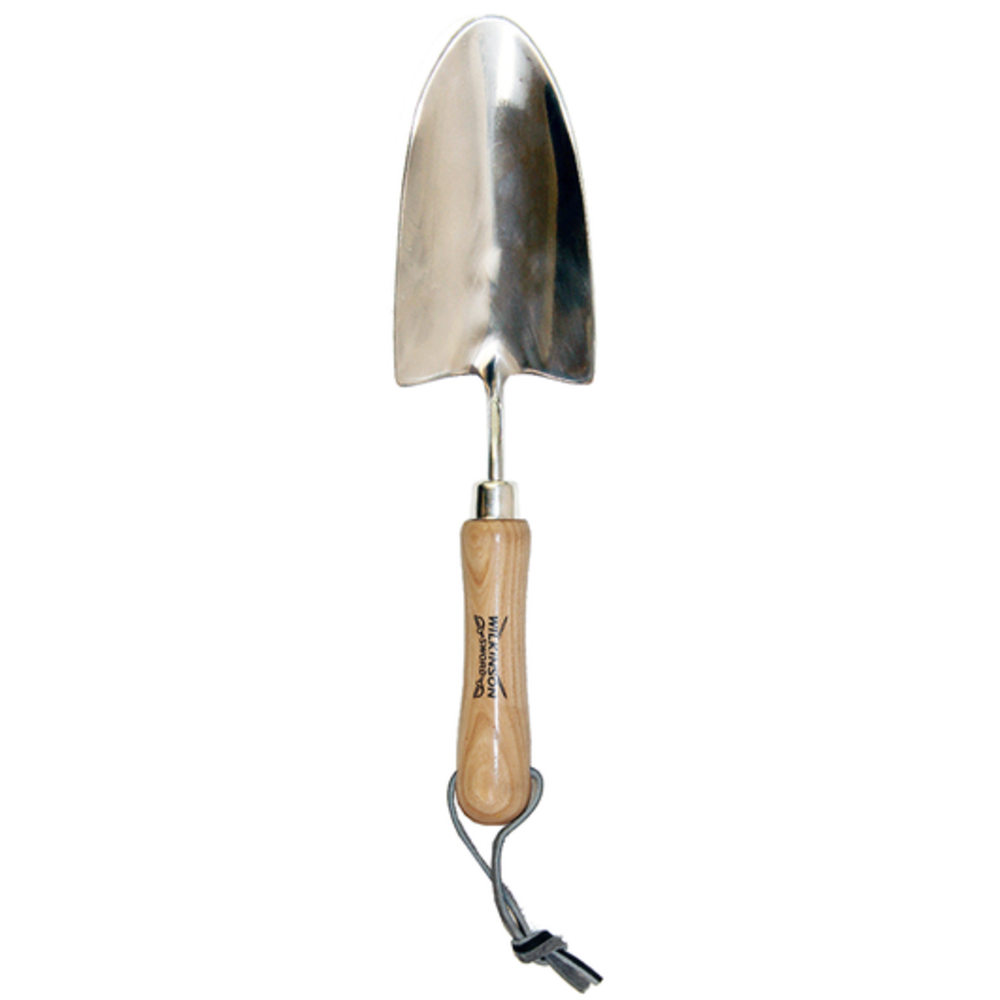
RRP: £6.99 | This sturdy stainless steel tool is a great allrounder for gardening tasks, and super easy to use and store thanks to the leather hanging strap.
1. Cut the roots
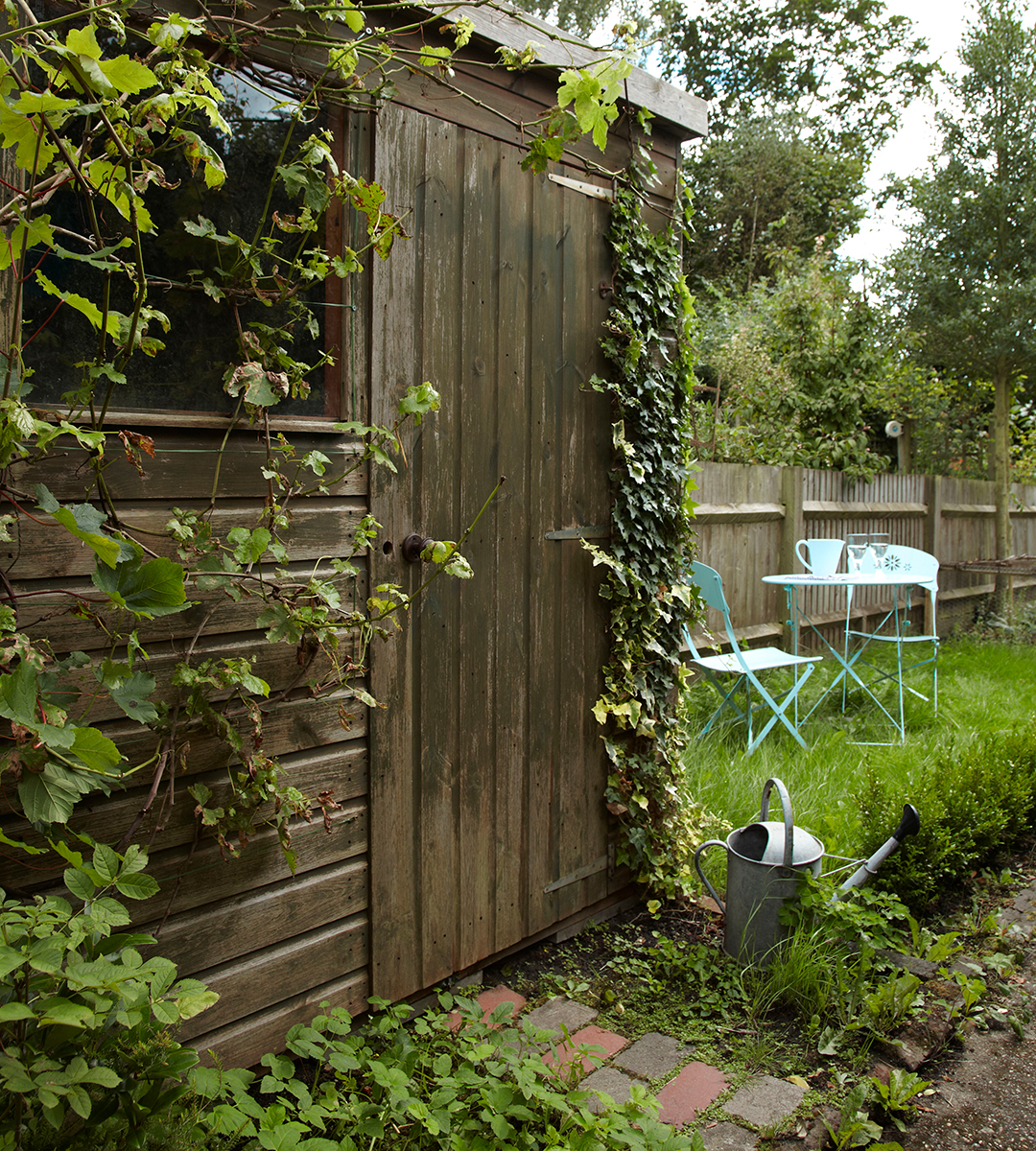
To avoid using chemicals you will need to be much more hands-on. "Firstly, cut the ivy at its base, where its stems meet the ground," Jane advises.
Speaking from experience the roots will vary wildly in thickness along different sections of the fence, depending on how well-established the roots are - so be prepared for some tough sections to cut through.
Secateurs are sufficient for the thinner roots but you will need a more heavy-duty tool for well-established roots. "To cut through the thickest parts of the vine, use pruning shears" suggests Jane.
"Cut the Ivy stems about 30 to 60 cm above the ground. This will make it easier to handle the vines and ensure that the entire plant is removed."
2. Pull vines away from the fence
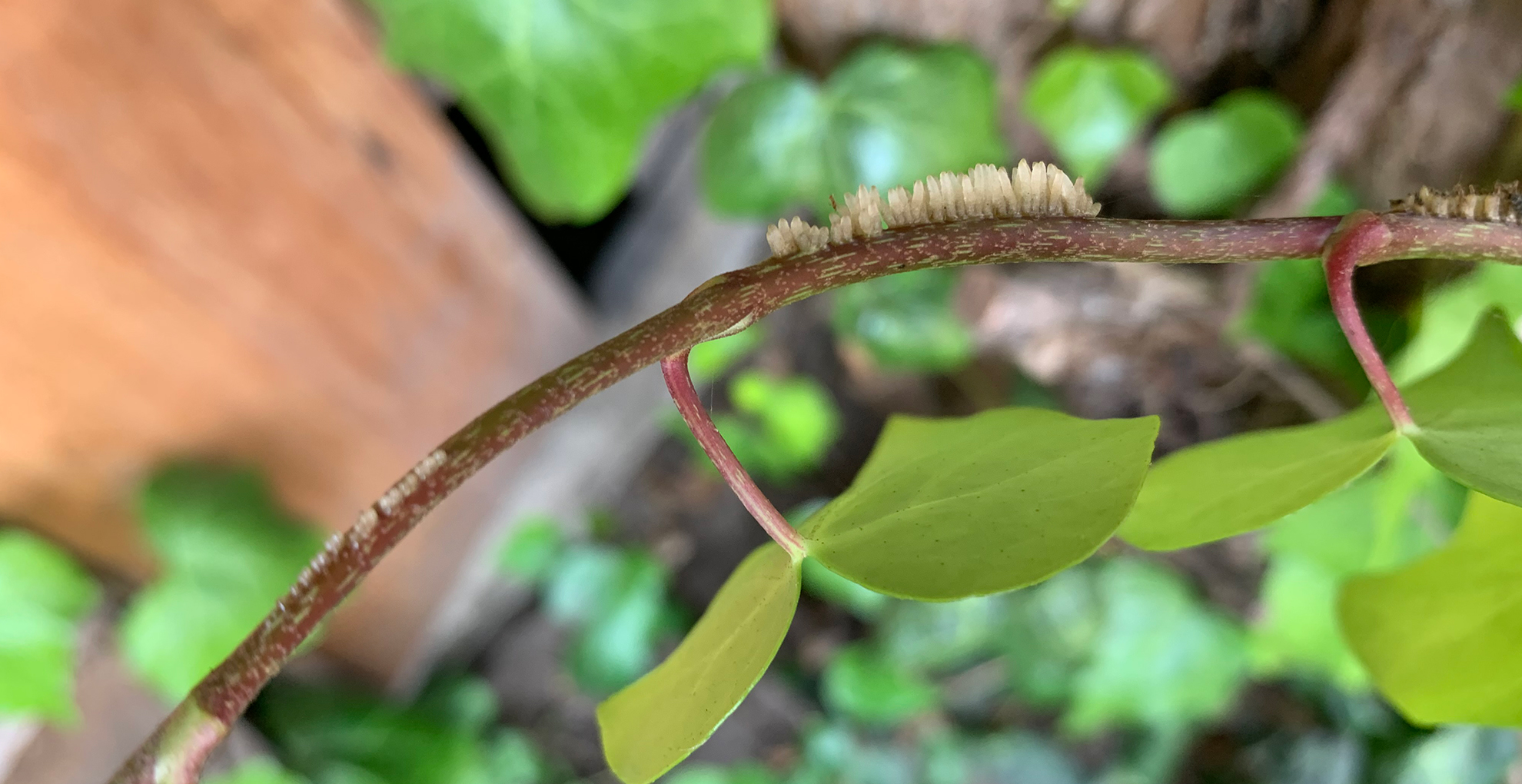
Now comes the satisfying bit, tearing the wines free from the fence or wall. "Ivy sticks to the surface due to microscopic hairs called setae and tiny globules that have extreme stickiness," says Mark.
"Remove the ivy from the fence or wall by gently pulling it," advises Jane. "Work your way down from the top to avoid damaging the fence." The warning comes because in some areas the roots may have weakened the fence and pulling too hard may cause distress to the surface.
To make the job easier Mark advises: "Ideally, leave the severed vines to crisp up. Sections of the vines can then be pulled upwards to lift them off the wall’s surface."
Jane adds: "You may need to use a garden knife or trowel to pry the vines and roots away from the fence if the ivy is stubborn."
3. Remove the roots
Once the ivy has been removed from the fence it's time to deal with the roots to ensure it doesn't grow back. Like when getting rid of weeds in grass, if you don't remove the root below the surface it will grow back in quick succession.
In place of using chemical pesticides to kill the roots, you will need to dig the roots out.
"Using a trowel or garden fork, dig up the roots of the ivy," says Jane. "You should remove as much of the roots as possible to prevent regrowth."
"It is the aerial roots that will be the most stubborn," says Mark. "Do not be tempted to go in quickly to try to remove the roots. If the roots have managed to work their way into cavities and the mortar, this must be undertaken carefully to avoid further damage to the wall.
The stump and roots can then be removed either by digging them out by hand or by using a mini digger with a small bucket, taking care not to hit the wall or fence."
However, Mark warns: If the ivy stump is next to a tree and the tree’s roots prevent digging, then cutting it back regularly may help weaken the ivy plant, but it won’t kill it."
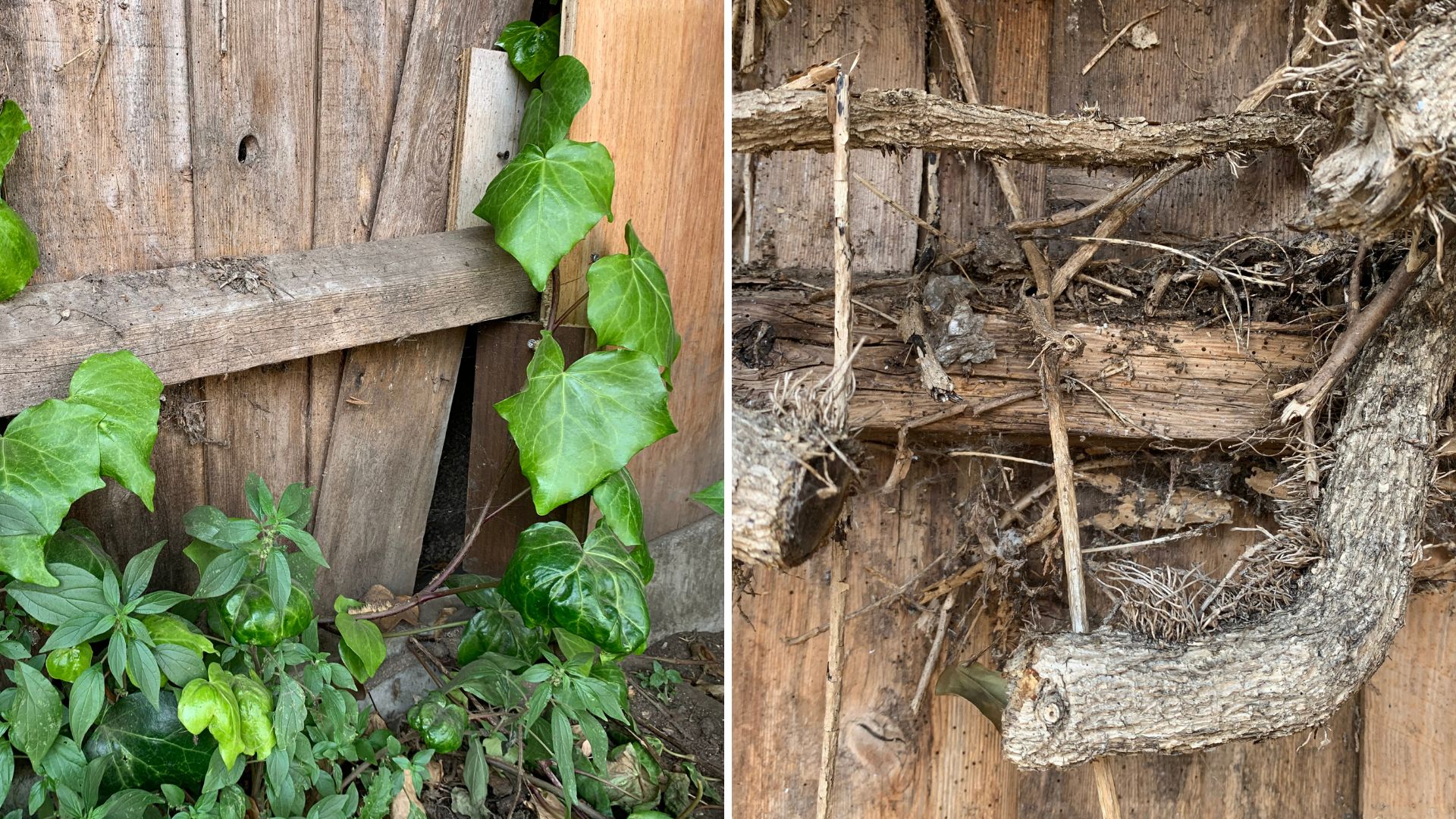
4. Dispose of the ivy
While garden waste from pruning roses, pruning hydrangeas or pruning a clematis can be recycled if you are making compost at home, ivy needs to be disposed of.
"Ivy should be removed and placed into trash bags or green garden waste bins, not composted, since it can take root and grow again," Jane explains.
5. Add a layer of mulch
Once you have dealt with the problem all that is left is prevention to ensure you don't have to get rid of ivy again.
"You can suppress any new growth by covering the area with mulch or fabric," suggests Jane. "Keep an eye out for any signs of ivy regrowth on the fence. Whenever new sprouts appear, remove them promptly and keep the fence or wall and surrounding vegetation tidy to keep the ivy away."
FAQs
How do you prevent ivy growing back without using chemicals?
"Solarising the soil can be a good solution for severe ivy problems," says Jane Dobbs. "During the hottest part of the year, cover the affected soil with clear plastic and leave it in place for 4-6 weeks. Seeds and roots of many weeds will die from the heat generated. Ivy regrowth can be discouraged by amending the soil."
She adds: "Compost and other organic matter can make the soil less welcoming to ivy, as ivy thrives in poor soil."
Frequent garden maintenance will help keep unwanted ivy at bay, but if all else fails you could try a natural weedkiller, using vinegar. That's right, not only can you clean with vinegar you can also be a natural, cheap weed killer.
"Mix white vinegar and salt with water (20:80 ratio, respectively), and drench the leaves, stems and aerial roots with the solution," suggests Mark. "It will take a while to reduce the vigour of the ivy plant, but it could be another way of removing an unwanted plant. But like chemical weedkillers, the vinegar solution will also kill other plants in the immediate vicinity, so screen off those plants that you want to keep with cardboard or sheet plastic to protect them."
Are there other considerations when removing Ivy?
Consider the structural integrity of the area where you are removing ivy, for example, the ivy may be holding the shed or fence together, so take care when removing it. Walls may need repairing, such as repointing mortar and filling cavities.
If you purposefully try to attract birds to your garden be aware "There is a potential for Nesting birds to be present in the ivy," says Martin Rawlings, project manager at Thomson Environmental Consultants. "Thoroughly check for nesting birds, and if present, wait until the young have fledged and the nest is no longer active. Or, undertake the work outside the active nesting season (i.e., between October and February).
Ivy can be a great habitat for wildlife, providing shelter and food. If you are removing it, think about other areas of the garden that you could enhance to make up for the habitat being removed. Putting in bug hotels and providing wood piles for insects and amphibians are just two suggestions."
Try planting the best pollinating plants in its place to cater for the wildlife.

How do you get rid of groundcover ivy?
"A weed-suppressant membrane and a thick mulch of bark could be laid over groundcover ivy to prevent light from getting to the leaves," Mark suggests. "If it’s an area just covered with ivy and no other plants, then thick black plastic could be laid over the ivyand pegged down to prevent it from blowing away. This, too, will stop light from getting to the ivy plant.
Ivy becomes a significant problem when it grows over a fence from the garden on the other side because the roots are already incredibly well established when you have to deal with the problem. I'm speaking from experience because I'm now replacing a fence because of the many holes in the panels at the rear of my property.
My advice is just to keep on top of it to prevent costly problems further down the line.







